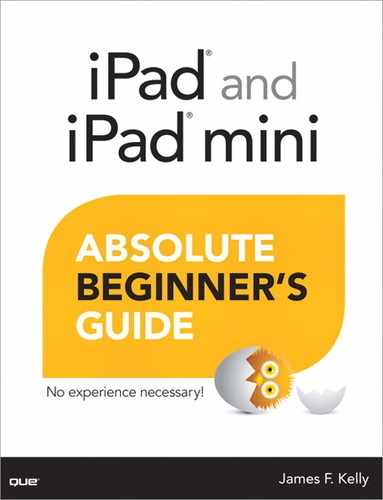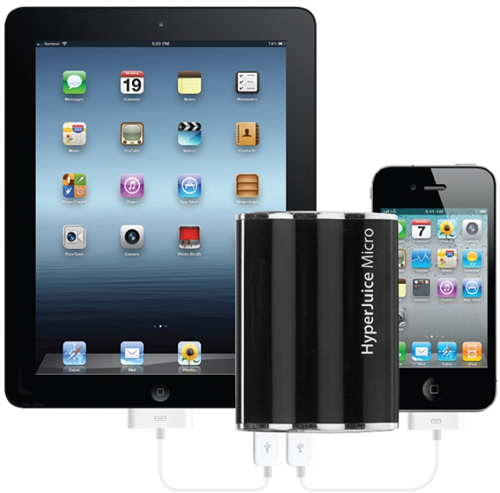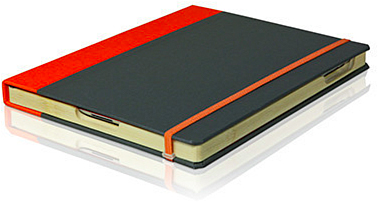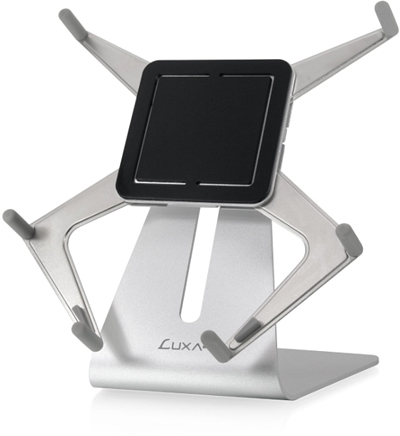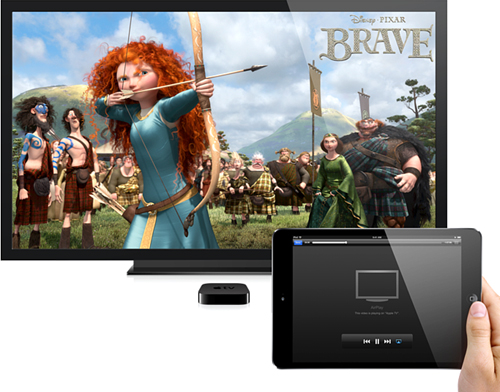18. Charging and iPad Peripherals
You’ve learned all about the various apps and features that your iPad offers, but now it’s time to learn a few bits of information related to third-party products and services. You’re going to find that the iPad has its own industry of providers who sell chargers, cases, keyboards, screen covers, and just about anything else you can imagine.
Hopefully you’ve been using and enjoying your iPad or iPad mini, playing games, reading eBooks, opening email messages, taking photos, shooting videos, sending messages, web chatting, taking notes, and lots more.
You may have been enjoying your iPad so much that you’ve now discovered a fundamental truth about your new tablet—it runs on batteries that eventually must be charged!
Yes, your tablet is an electronic device, and like all electronic devices its batteries will only last so long before they must be charged up again. Fortunately, the iPad and iPad mini were built with some hefty batteries! I’ve found it rare that I have to charge my iPad every day. Actually, every three or four days is more realistic, and I’m a heavy iPad user. If you’re only using your iPad to check email and maybe read some websites and eBooks, you may very well find that your iPad’s batteries are lasting much longer.
The charging port is found at the bottom of the iPad or iPad mini, just below the Home button. As a rule, it’s always safer to plug your charger into the wall first and then insert the other end of the wire into the tablet; if you plug in your iPad first, and then the plug into the wall you could damage your iPad with a small surge of power. (If you’ve ever inserted a plug into the wall and seen a small spark, that can cause problems for sensitive electronics like the ones inside the iPad.) Try to never plug in the wire to your iPad and then insert the charger into the wall socket.
Charging time varies from iPad to iPad. With the iPad 1 and 2, I could typically get it fully charged from below 10% to 100% in less than four or five hours using a 10-watt charger. The iPad 3 and 4 seems to take about seven to eight hours to get fully charged. The iPad mini comes with a 5-watt charger and can be completely charged, 0% to 100%, in about three-and-a-half hours. Not bad!
 Caution
Caution
Some people recommend charging your iPad mini with the 10-watt charger if you have one available. Although your iPad mini will charge faster, some reports out there state that this type of fast-charging may not be good for the iPad mini’s batteries. Charge at 10 watts at your own risk!
If you’re one of those iPad power users and you’re always finding yourself on the road with an iPad at 5% and you’ve left your charger at home, you might want to consider a third-party power charger, such as those available from Hypershop.com. The HyperJuice Micro costs around $70 and can charge an iPhone and an iPad at the same time using its two USB ports. Figure 18.1 shows the HyperJuice Micro device.
Many vendors sell external chargers that are similar to the HyperJuice Micro. Just be sure to do your research and read some user reviews before making a purchase.
Peripherals and Add-Ons
There is no shortage of third-party products (and official Apple products) for your iPad and iPad mini. These include printers, keyboards, cases, stands, and much more. You already learned about external power supplies that can quick-charge an iPad’s dead batteries, but you may find some of the following items of interest for making your iPad experience more enjoyable.
AirPrint Printers
Many people are finding themselves using their iPads as much or more than they use a separate computer. I haven’t tracked my time usage, but I would estimate I spend an equal amount of time using my iPad for writing and research as I do with my laptop. My iPad is much more portable, and its battery life is twice as long as the laptop.
That said, when I need to print something I’ve found on my iPad (or maybe an attachment received via email), I typically end up forwarding it to my laptop that’s connected to a printer. I do very little printing, but I could see this being a major inconvenience for a lot of iPad owners. Fortunately, Apple has a solution.
Your iPad can print to any printer that supports the AirPrint service. This service was created by Apple as a way for third-party manufacturers to add iPad support to their products. Not every printer offers AirPrint (as a matter of fact, it’s a very small number that do), so if this feature is important to you, you’ll want to examine the list that Apple continuously updates of AirPrint-enabled printers. You can find that updated list by visiting http://support.apple.com/kb/HT4356. The list is organized by manufacturer name, so if you have a favorite brand of printer, click on the name of the company and view the list of available printers that support the AirPrint service.
External Keyboard
The onscreen keyboard is fine for typing tweets and short emails as well as entering data in online web forms, but for typing longer documents (such as a book chapter), you may want to take a look at the external keyboard options available.
At one time, Apple was the only game in town—they used to offer a keyboard with a small stand that also served as a charger. However, this keyboard doesn’t appear to be available anymore (except on eBay). Apple still sells the Bluetooth keyboard, however, that connects to your iPad wirelessly. You can see this keyboard in Figure 18.2.
But Apple is no longer the only game in town when it comes to external keyboards. Do a Google search for “iPad external keyboard” and prepare to spend some time sifting through all the available options.
One of the more popular options these days is a case for the iPad that also includes a keyboard built in to the cover of the case. Figure 18.3 shows the Logitech Ultrathin Keyboard Cover. The keyboard covers the screen of the iPad, serving as a cover until you open it up and prop the iPad on the built-in stand.
Dozens of vendors sell cases with keyboards built in, so be sure to look around. A great place to start is MacMall.com—do a search for “iPad keyboard cases” and you’ll find a number of competing products.
Cases
I just mentioned cases, but not every case comes with a built-in keyboard. As a matter of fact, right now exactly 7,243 cases are available for the iPad and iPad mini. Oops, make that 7,244...and counting. Yes, the number of case options available is staggering.
You’ll find hard cases, soft cases, gel cases, and Kevlar (bulletproof) cases for both the larger iPads and the iPad mini. I’ve tried a number or cases, and I prefer hard cases to soft ones, but that’s just my personal preference. I’m more likely to drop something on my iPad than to drop my actual iPad, so I’ve steered clear of the soft and gel-style cases and gone with something that has a tough top shell to protect the glass screen.
One thing is for certain, however, when it comes to iPad cases—get one! A case will keep the iPad somewhat protected from spills, drops, and bumps, so it’s a worthwhile investment. No case is going to protect your iPad from a 50-foot drop (well, maybe...some case vendors make some mighty big claims), but my iPad has been saved from some near misses all because I’ve wrapped it in a nice protective shell.
Personal recommendation time: I love my DODOcase from Dodocase.com. From a distance, it looks like I’m carrying a hardback book. The top flips over to reveal my iPad held inside a tough bamboo frame. The thing is handmade (you can pick from a number of styles and colors) and I never stop getting compliments on it. Figure 18.4 shows the DODOcase I purchased—I love orange.
Stands
A number of vendors offer optional methods for holding your iPad. You’ll find many options for hand-free operation of your iPad (well, except for using your fingers for gestures). There are stands that hold your iPad at an easy angle for viewing while sitting on a table (the iPad, not you) and there are stands that allow you to attach your iPad to various other surfaces such as inside a car or to a wall.
Figure 18.5 shows one popular minimalist tabletop stand from Grooveipadstand.com—simply insert the bottom edge of the iPad into the groove and your iPad is ready to go.
Figure 18.6 shows another type of stand that is more protective in nature and surrounds your iPad while still offering hands-free operation. This one is the Luxa2 H4 Holder from Luxa2.com.
If you like to use your iPad while sitting at a table or maybe as a presentation device in small meetings, a stand is a great way to securely hold your iPad at an easy-to-read angle.
AppleTV
Okay, the AppleTV isn’t really an iPad accessory, but an argument could be made for it. At $99, it’s cheaper than many of the fanciest cases and keyboards for the iPad, and what it offers to the iPad user is an amazing feature called AirPlay.
The AppleTV is tiny—that’s it tucked under the TV in Figure 18.7.
 Note
Note
The AppleTV requires a constant Internet connection for it to function properly, and a direct connection to your router or Internet modem will make sure that download speeds are fast. That said, it can communicate via Wi-Fi, but if you’ve got a slower DSL connection, expect some lag issues.
The AppleTV by itself can do some amazing things—Internet browsing, iTunes access to play your music via iCloud, Photo slideshows, movie purchase and rentals, and much more. For a complete description of all its features, visit Apple.com/appletv.
AppleTV also has what’s called AirPlay, which allows you to display whatever is on your iPad screen on your TV! (This is only supported with versions of the iPad 2 and higher).
With AirPlay, any app I open on my iPad, any game I play, any photo or video I watch can be displayed on the larger television screen in my living room. For example, at a recent birthday party for my oldest son, I had a slideshow of photos of him that continuously played on my iPad and displayed on the TV—our visitors (friends and family) enjoyed seeing all the pictures cycle through his birth to his fifth birthday party!
 Tip
Tip
For real-time photo sharing with the AppleTV, I took photos with my iPhone and immediately added them to the album I created in the Photos app via iCloud. My iPad would synchronize (via iCloud) the albums, and the birthday album had instant new photos added to the slideshow. Isn’t technology cool?
Lots of accessories haven’t been mentioned here: screen protectors (clear sheets for protecting against smudges and spills), attachments for connecting photo and video cameras, and even toy cars that you touch to the screen and drive over the terrain that’s displayed (search for Cars 2 Appmates or Hot Wheels Aptivity in the App Store).
As you use your iPad more and more, you may find yourself wanting a case, a stand, or some other accessory that would make using your iPad that much more enjoyable. Rest assured, if you can think of an accessory you’d like to own, someone out there is probably making and selling it!
Insurance
I’ve never been accused of being accident prone, but that doesn’t mean I’m not capable of dropping my iPad or forgetting and leaving it somewhere. The iPad is a big investment, and like any investment, it’s deserving of protection. And I’m not talking about cases here. I’m talking about protecting your financial investment against loss, damage, or theft.
Like iPad accessories, you have options when it comes to insurance. The most obvious is the Apple Care service you can purchase when you buy a new iPad. You can find more information about the extended coverage offered by Apple by visiting http://www.apple.com/support/products/.
 Tip
Tip
Your iPad may already be covered by your homeowner or renter insurance for theft or damage (fire, flood, and so on). The only way to know for certain is to contact your insurer and check to see if your policy covers electronics such as the iPad. Be sure to keep your receipt for the iPad you’ve purchased so you can verify its purchase price.
And there are other options out there besides the one sold by Apple. You’ll want to do a Google search for “iPad insurance” and investigate the various companies that offer protection against damage and theft. Not all of them offer the same types of protection, and not all of them have the greatest record based on customer reports. Do your homework, investigate your options, and if you’re wanting to purchase some additional backup for your tablet, get a plan that you can afford and that your gut tells you will be honored should you have need to use it.
